Tv499 - 1890s Vest pattern has some tricky parts to it. Mostly about attaching the collar. Here are a couple things to know that should help you sort it all out. The Collar Lining and the Single Front (or Double Lap when sewn to Double Front) should have the exact same neckline edge. The center front edges should match up, and the shoulder end of the Collar Lining should match the shoulder edge of the Front. The Collar should also have the same exact neckline, the only difference is the added back neck extension, and 1/8" added at the neck...Read More
Category: Working with Patterns
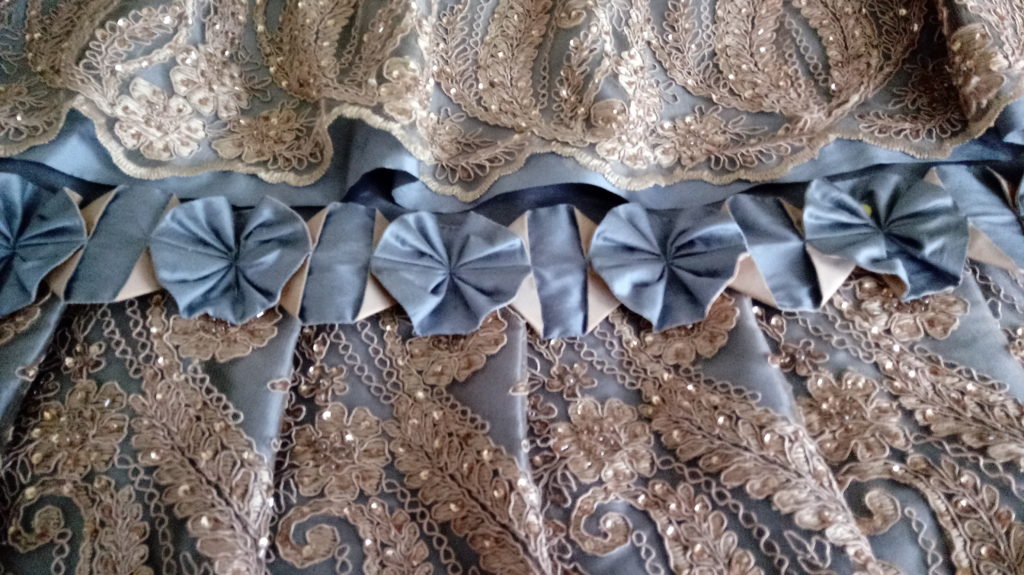
Shell Ruche – Rosette Pattern
I have been getting a lot of people asking about how I made the Shell Ruche trim on my wedding dress. So here we go....Here is the skirt, with the ruche heading the lace and silk ruffle. My version was made with fabric, but you can use a ribbon to do the same thing. The pic here is the skirt portion with the ruche. This ruche is 3" wide, and is made from 2 colors of silk dupioni. The gold is the underside and the blue is the top side. The fabrics were sewn right-sides together into a tube, and...Read More
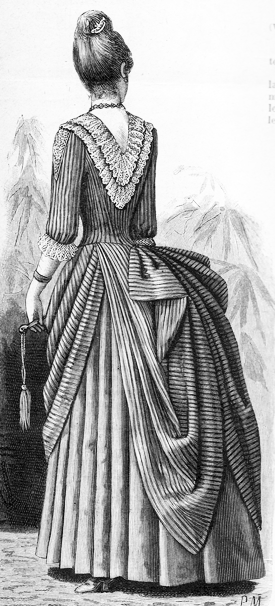
What is a Burnouse Pleat?
I have been busy creating new patterns for the late 1880's, and the one thing that stands out as unique about this time period is the Burnous Pleat. Just about every skirt from 1887 - 1888 has some kind of drape created by this form of pleat. Something else I found out, is that no one seemed to know how to spell the word "burnous". I even found it spelled two different ways in the same sentence. So if you see Bournous, Bournouse, Burnous, Burnouse, or Burnoose, it all means the same thing. And yes, I seem to spell it...Read More
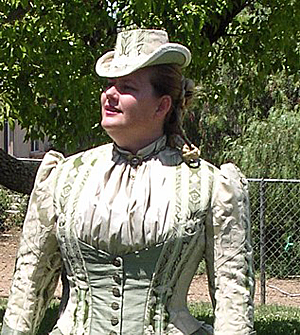
Anatomy of a Layered Vest
Lately, I have gotten a lot of interest in this particular bodice. So I have decided to start off my Sewing Tips series with details and images of how achieve this fairly easy effect from any basic vest pattern. This bodice specifically was made from the 1884 French Vest Bodice - TV463. The layered effect is all built onto the vest portion itself, before the vest is sewn to the rest of the bodice. Of course, since this bodice is already completed, the pics will show all the pieces attached to the bodice, instead of separate as you construct it....Read More

Working with the 1903 Trumpet Skirt – TVE21
I would like to talk about a couple issues that have popped up with 1903 Trumpet Skirt - TVE21 skirt pattern. One which is entirely my fault, and the other is one which I have seen pop up a few times when alterations to this pattern go wrong. First up, the problem of..... What the heck to I do with the Placket Facing piece? I can't find it mentioned in the instructions anywhere, what did I miss? Well, you didn't miss anything. This pattern piece should not be on this pattern. The long story is that I was mulling over...Read More
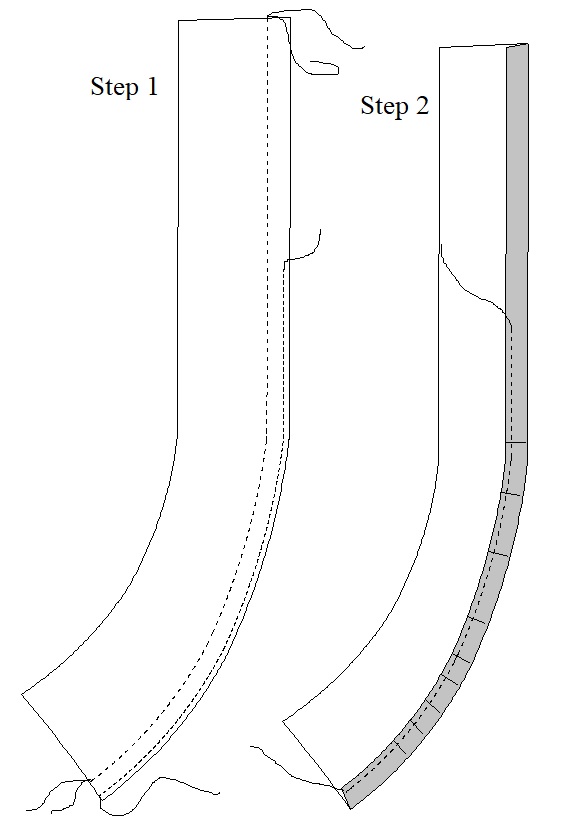
Facings Made Easy
Facings are a great way to finish edges. But sometimes, it can be difficult to turn the outer edge under and make it look clean and neat. Here is a trick I often use for easy turning, which can be used on any outside curved edge.Step 1 - run a stitching line along the turn line. In most cases, this will be the seam allowance width, or 1/2" for most Truly Victorian pattern. This can be done on machine, or by hand. I find machine works best. This will give you a line to fold along. And it makes the...Read More
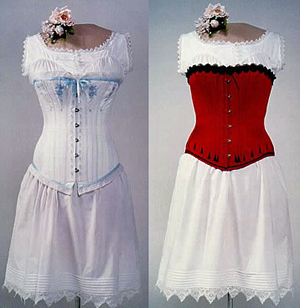
Working with LM100 Corset Pattern
First, let me say that this pattern is one of the best corset pattern available today. I love this pattern and can fit any size and shape with relative ease. However, is does have a few quirks and can require a few tweaks to get the most benefit out of it. The following suggestions are little tricks and quips about my experiences with this pattern. I am listing them here to give beginners a guiding hand. A. Which to choose, the Dore style or the Silverado? These two styles are both used from 1860 until 1898, so you want to...Read More
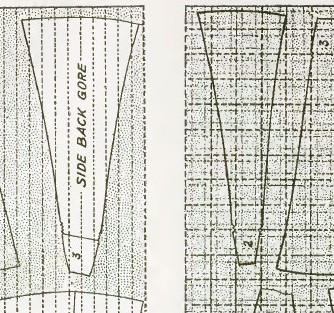
Stripes and Plaids
I was reading through one of my sewing manuals and found a great tidbit about working with stripes and plaids in skirts. The book is "The American System of Dressmaking" from 1912. It looks like this method will apply to 1890s to 1910s skirts. As a preface, most skirts of this period are cut with the front of the gore on the straight of grain, or close to. The back edge of the gores are then on the bias. But this makes striped and plaids a bit awkward to deal with. When using stripes or plaids, they recommend that you cut...Read More